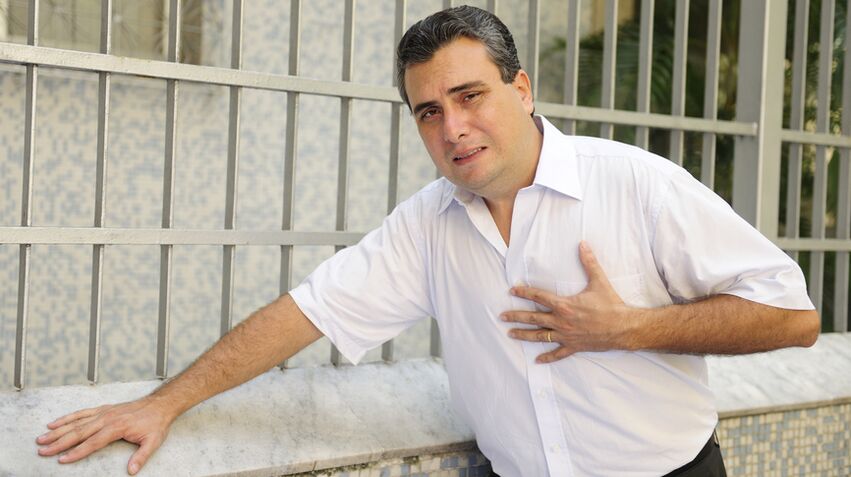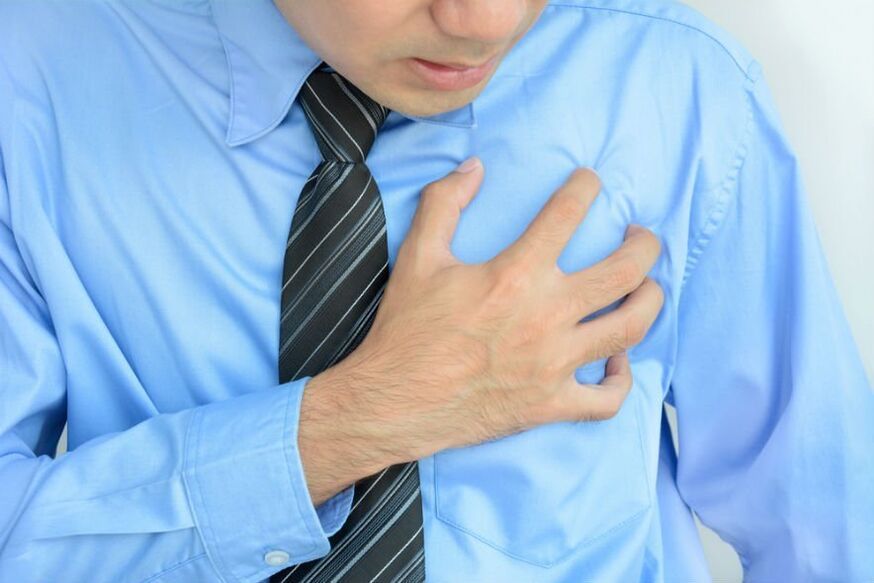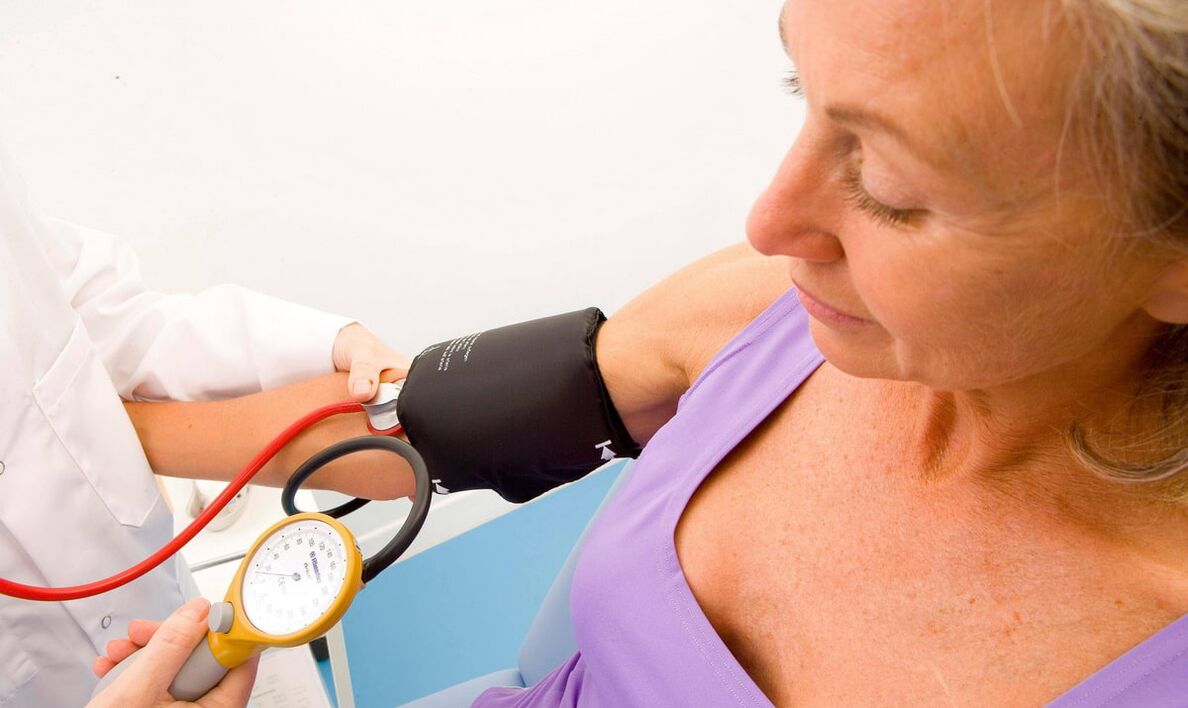
Painful sensations in the heart area force patients to consult a cardiologist. Anxiety, nervousness and fear for one's life arise. However, not all unpleasant symptoms are directly related to heart problems. Even thoracic osteochondrosis - symptoms, sensation - pain in the heart provokes as often as diseases of this organ.
When the vertebrae are affected, the pain behind the sternum, back or even closer to the diaphragm can often occur, regardless of the stage of the pathology. And the mechanism of the unpleasant symptom has several features.
Mechanism of development of symptoms
Breaks in the heart during osteochondrosis cannot occur by themselves, they develop only as an echo of the main disease:
- Thinning of intervertebral structures. The distance between bone elements and cartilage decreases, which leads to the limitation of nerve roots. As a result, in the presence of destructive processes in the thoracic or cervical spine, painful sensations that spread to the heart often occur.
- Changes in the heart muscle. Due to the disease, sensations spread to the heart muscle, "sounds" of pain.
- Involvement of the upper limbs in the process. The effect of osteochondrosis on the heart may be due to excessive muscle tension in the arms. As a result, pain is transmitted to the heart muscle, but the EKG does not show any abnormalities.
- Changes in the structure of the lumbar region. The position of the abdominal organs changes, resulting in increased stress and changes in heart rate.
- Muscle spasms and changes in blood circulation. Pain in the heart with osteochondrosis occurs in response to changes in blood flow in the large arteries of the back. Because the blood has to be pumped through a narrower passage, the heart rate increases.
- Severe destruction of intervertebral discs. Nerves are compressed, which causes pain in the heart area. Hypoxia develops gradually. It also involves the activity of the brain, as a result of which the normal functioning of the internal organs changes.
- Due to compression of blood vesselsand nerve fibers, high pressure can be seen. Because of this, painful feelings arise in the heart.
You can distinguish pain in the heart from the manifestations of osteochondrosis by certain symptoms.
Symptoms of osteochondrosis with painful sensations
Cardiac syndrome - pain in the heart associated with osteochondrosis of the breast - develops in many patients.Symptoms will have the following characteristics:
- oppressive, dull pain in the heart;
- gradually increasing anxiety, silent, not too obvious;
- the pain lasts for a long time, covers the chest, causes palpitations;
- there is no sharp intensity of pain due to the destruction of the cartilage between the vertebrae;
- Almost always, a symptom such as a feeling of heat behind the sternum helps to distinguish heart pain from osteochondrosis;
- heart drugs (nitrates) do not help relieve pain;
- if a person begins to move his upper limbs, the pain intensifies.

If the cervical spine is involved in the process, pain is felt in the vertebral region.
Some patients note that the pain is of a different nature: the discomfort covers the left side of the sternum, affects the muscles, sometimes spreads to the shoulder, neck and face, and the attack can last for several days.
If compression of the vertebral artery occurs, additional symptoms appear: weakness, dizziness, spots, and in severe cases, the patient loses consciousness. Also, with heartache, there is a decrease in hearing and vision, blood rushes to the face. If a person takes medication for hypertension, they do not help him.
Differences in pain
There are several ways to distinguish heart pain from osteochondrosis, the main method is to undergo an MRI and ECG examination.In addition, you should know what happens with damage to the thoracic cartilage between the vertebrae and what does not happen with heart disease:
- pain is moderate, increases and lasts for a long time. With heart attacks, the symptoms are more severe;
- if you press your chin to your chest, the pain of osteochondrosis will intensify;
- if the pain intensifies with movement and sports, this is osteochondrosis;
- Heartache always comes with panic, fear and anxiety.
Neuralgia itself is safe, but it can be aggravated when the body bends in different directions or makes sharp turns. You can relieve pain with analgesics.
Serious heart disease and osteochondrosis
It is necessary to know how the heart hurts with osteochondrosis of the thoracic region, especially to distinguish neuralgia from life-threatening conditions. In chronic ischemic heart disease, the pain occurs very sharply, within 3-5 minutes. Feelings of a pressurized nature do not allow breathing, and after nitrates, the symptoms disappear immediately.
If the risk of myocardial infarction is high, it should be remembered that in this case a person may lose consciousness, feel nausea and sharp chest pain. The pain of osteochondrosis never manifests itself so acutely.
But with VSD (dystonia), the symptoms can be similar. However, unlike pain in the heart with osteochondrosis, with this pathology, a person experiences tachycardia, bradycardia, a feeling of fear, gets tired quickly and feels constant weakness. The pain is usually aching and dull, and with osteochondrosis it is oppressive.
Heartbeat
With osteochondrosis, the heart can not only be damaged, but also disturbed by angina pectoris, arrhythmia and tachycardia. This happens due to spasms and compression of the artery.The following features appear with osteochondrosis:
- increased heart rate at rest, increased rhythm during exercise;
- continuous smooth rhythm;
- wave-like heat attacks;
- tachycardia may be accompanied by presyncope.
If the disease is treated well, the symptoms disappear.

Extrasystole
Extrasystole is a condition with the feeling of a second heart attack. With osteochondrosis, this complication causes a real panic. But this unusual situation is the norm for the human body. True, most people do not feel such a process.
Extrasystole is a kind of "respite" in the work of the heart muscle. Surprisingly, such short breaks are vital for the body.
Such "pauses" occur in people regardless of age, weight and daily physical activity.
Pressure during osteochondrosis
High blood pressure is often among the symptoms of thoracic osteochondrosis. However, there may be other reasons for this pathology. With osteochondrosis, arteries, veins and blood vessels are compressed, the nutrition of the brain and other organs deteriorates.

Patients start taking drugs to treat this problem, which eventually stops blood from flowing back to the brain. Oxygen starvation and nutritional deficiency develop. As a person, he suffers from symptoms: weakness, drowsiness, pain and dizziness, pale skin, nausea.
Coping with painful feelings
After it is possible to distinguish heart pain from osteochondrosis, it is necessary to differentiate the treatment of diseases. If all the symptoms are related to the damage of the thoracic spine, then no medicine can be taken to relieve the pain in the heart.
Therapy should eliminate the causes of osteochondrosis or minimize them. Regular, systematic treatment has been proven to help relieve tension, spasm, and tension in nerve fibers.Since the heart and osteochondrosis are closely related to each other, during an exacerbation, treatment should begin with the spine:
- A person should not move too much, bed rest is recommended.
- NSAIDs or glucocorticosteroids are prescribed to relieve acute pain.
- Local drugs that are good for relieving pain due to osteochondrosis are also used.
- Physiotherapy helps in the early stages of the disease, but is rarely used to relieve pain. Only during the recovery period after an exacerbation.
- Manual therapy is a very effective way to restore vertebrae, relieve spasms, tension and swelling of surrounding tissues.
- Exercise therapy and sports are also prescribed, which are useful for osteochondrosis of the thoracic region.
- In addition, you can use folk recipes - baths and compresses - they are very comfortable and have a positive effect on the emotional state of patients.
- An equally important diet in the treatment of osteochondrosis. Sufficient amounts of plant foods, healthy fats and protein are essential to repair damaged tissue. A balanced diet also helps to get rid of excess weight.

The best way to determine if you have osteochondrosis or a heart problem is to undergo a medical examination. With the help of X-rays and a simple EKG, you can understand which sensations belong to a certain disease.












































